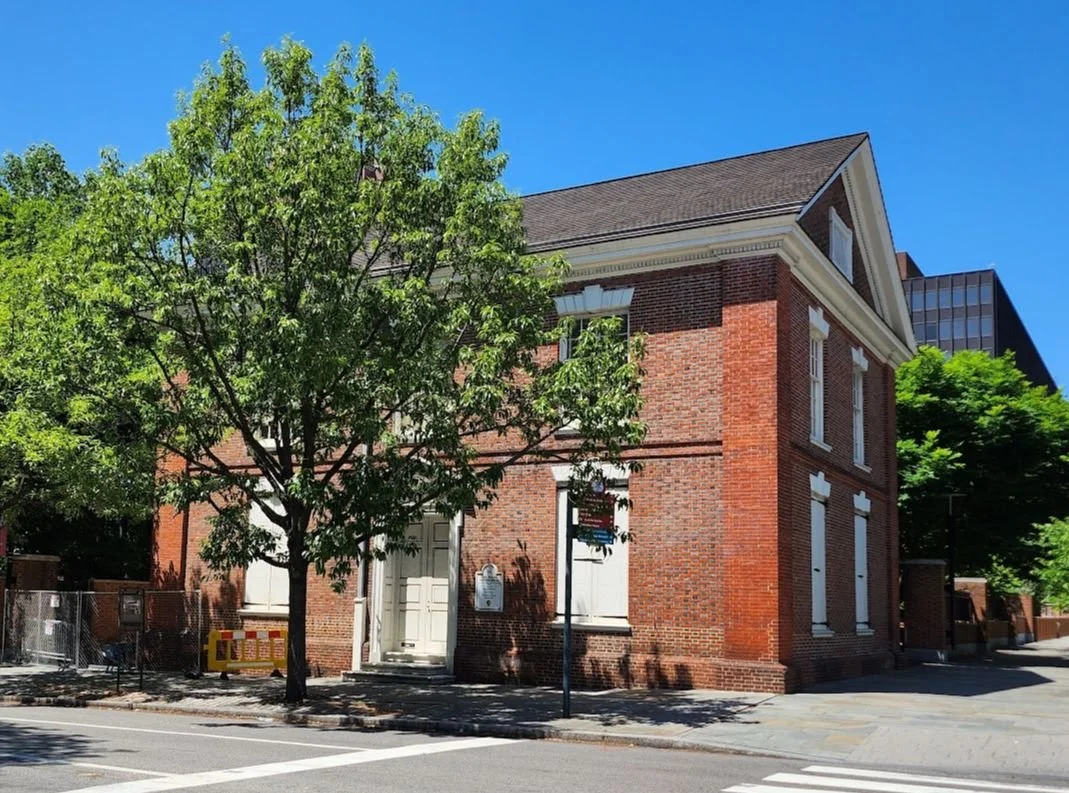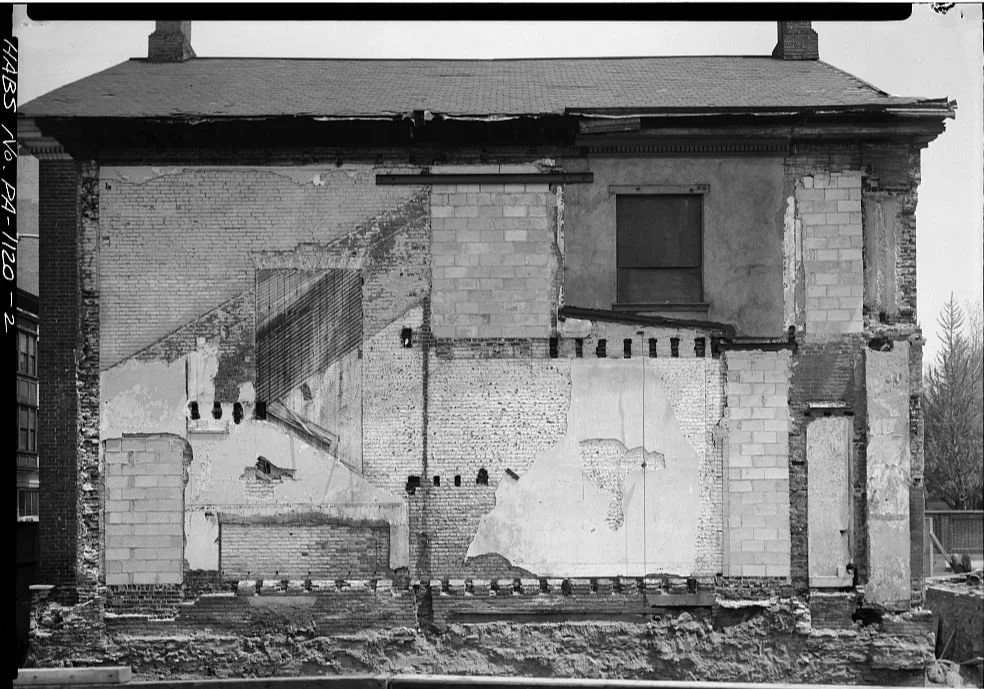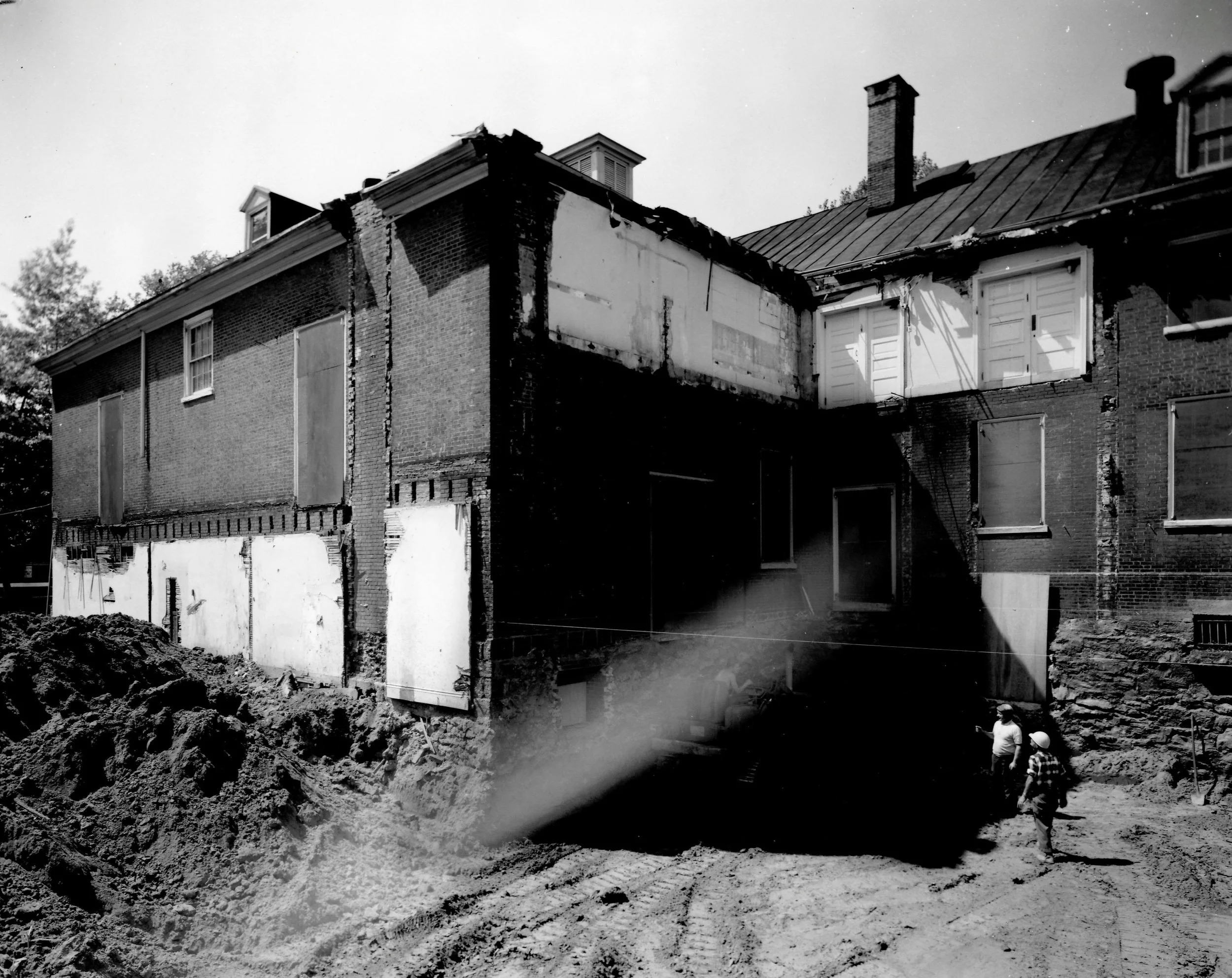Philadelphia’s Fighting Quakers
Quakers have lived according to the testimony of peace since the Religious Society of Friends’ earliest days in the mid-17th Century, but the Revolutionary War put this core belief to the test. As the movement towards independence began to grow in Philadelphia, many Quakers held fast to the pacifist tenet of nonviolence, and took a stance of neutrality by refusing to plead allegiance to either the Patriot or Loyalist cause. The Revolution created deep divisions among Friends, and by 1785 over 1,700 Quakers were disowned or persecuted for supporting the War - either by directly taking up arms, providing supplies, affiliating with known participants, or other offences.
Timothy Matlack was read out of meeting here in Philadelphia for poor business, and is known as the “Scribe of the Declaration of Independence”. It was his hand that penned the engrossed copy signed by the Continental Congress.
In 1777, Clerk of Philadelphia Monthly Meeting, Henry Drinker, was one of eighteen Quakers imprisoned in Virginia by Patriots for remaining neutral and refusing to pledge loyalty to Pennsylvania.
Lydia Darragh (1729-1789) was an affluent Philadelphia Quaker who’s home on Second Street was occupied in December 1777 by British troops. Darragh overheard their plan to attack General Washington at Whitemarsh and secretly warned the Continental Army. Due to the warning, little violence ensued. The Darragh family was later disowned for their participation in the war, but upon their deaths were buried here at Arch Street Meeting House.
In 1781, Matlack and Darragh became founding members of the Religious Society of Free Quakers, a group of Quakers and members of other denominations who had also been disowned for joining the Revolutionary War effort.
Led by Samuel Wetherill, the Free Quakers (also known as Fighting Quakers) held meeting for worship in a variety of private homes and businesses, but eventually a need arose for a permanent place to gather. In 1783, on the corner of Fifth and Arch Streets, the Free Quaker Meeting House was constructed.
Significantly smaller in size, the Free Quaker Meeting House is architecturally similar to Arch Street Meeting House and is a two story, Georgian style red-brick building.
The first meeting for worship was held in the Free Quaker Meeting House in June 1784, and the last was in 1836. Among it’s last attenders was Betsy Ross, who had been disowned by Philadelphia Quakers not for her support of the Revolutionary War, but for marrying out side the faith. In 1961, the Free Quaker Meeting House was renovated and relocated 38 feet west and 8 feet south of its original location.
Free Quaker Meeting undergoing renovations. Historic American Buildings Survey, C. (1933) Free Quakers Meetinghouse, 500 Arch Street, Philadelphia, Philadelphia County, PA. Philadelphia Pennsylvania Philadelphia County, 1933. Library of Congress.
Rear of Arch Street Meeting House in 1968. An architectural study of Arch Street Meeting House; prepared for Philadelphia Yearly Meeting of the Religious Society of Friends, by Lee H. Nelson and Penelope Hartshorne Batcheler, 1968.
The Free Quaker Meeting House is now operated by the National Park Service, and like Arch Street Meeting House, offers exhibits and guides to provide insight into the Quaker stories of Philadelphia.
Newell, Robert, 1822-1897 - Photographer, Castner, Samuel, Jr., 1843-1929 - Compiler. (ca. 1870). House and grounds where the Declaration of Independence was first celebrated.. [Scrapbooks].
DIG DEEPER!
It is also rumored that the Drinker’s hosted several Founding Fathers for a dinner on either July 2nd or July 4th, 1776. Neither event was documented in Elizabeth’s detailed diary accounts of her life during the Revolution.
This feature was originally shared on June 14th, 2025 in Arch Street Meeting House Preservation Trust’s newsletter.




